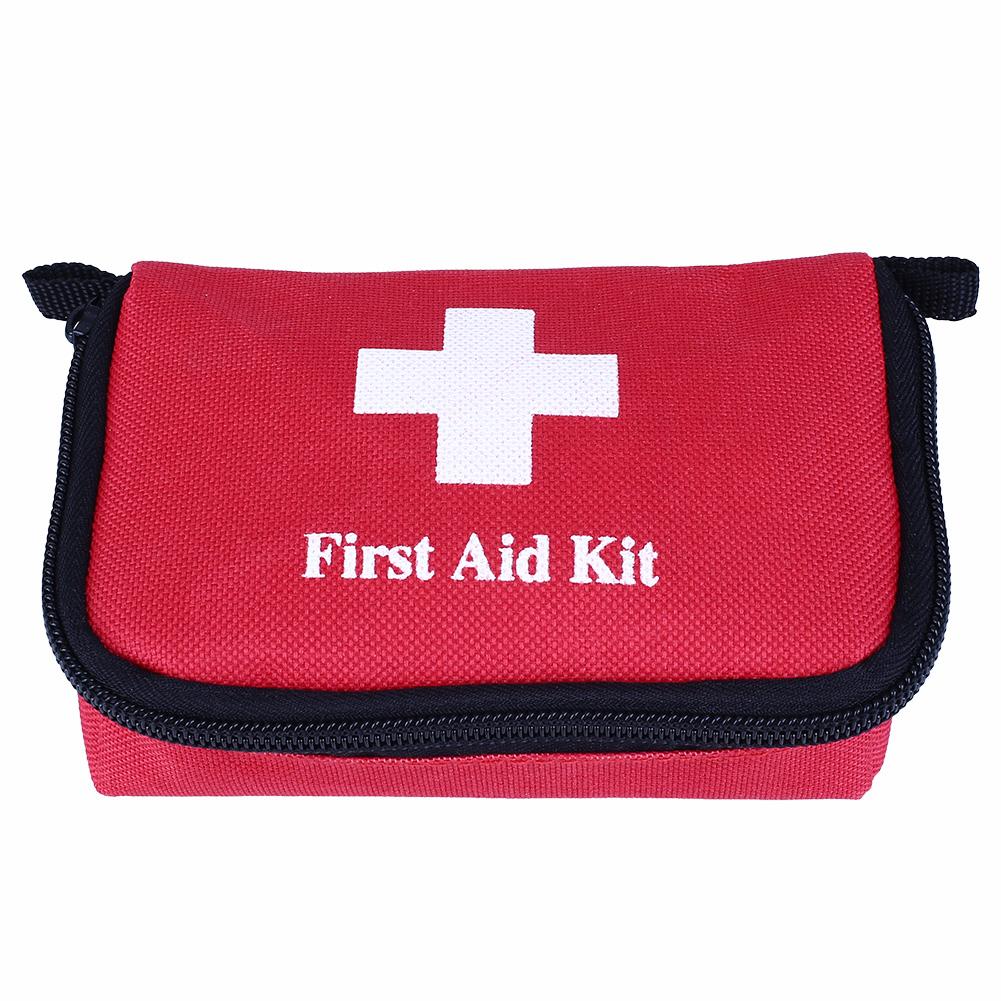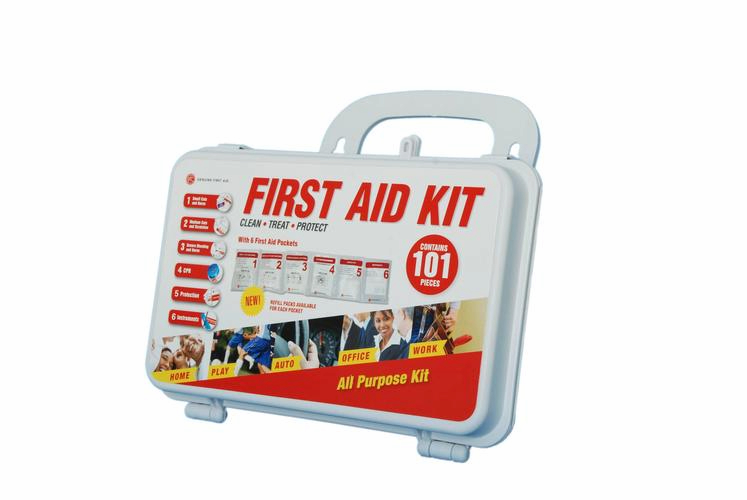
Horse First Aid Kit: Essential Things
An equine horse first aid kit is essential for every horse owner. Actually, you’ll need two or three. A small kit for trail rides, one for the truck, and one for the barn. A store-bought first aid kit is a good place to start, but they are actually too small and woefully deficient in the medicines you actually need to have on hand.
I often wonder if the makers of the store-bought equine first aid kits have ever dealt with a horse emergency or wound care because they are frequently so inadequate. For less money, you can create a better kit.
When your horse gets hurt, you never know when or where you’ll be, so you’ll need the equipment necessary to care for them until you can get them to a doctor. After your veterinarian has treated the animal, you’ll also need to have the supplies on hand to handle wound care.
If you have a suitable first aid kit, you will find that there are numerous situations in which you can take care of your horse without the need for a veterinarian.
A reliable zippered duffle bag is among the first things you’ll need to store all of your supplies, the majority of which are large and bulky. Instead of a plastic bin, a canvas duffle with handles is preferred because it is simpler to transport to the horse, wherever they may be.
Use the small plastic case that your store-bought kit, if it has one, comes with to store all of your cotton bandage pads.
It makes sense that the barn will house your biggest and most comprehensive first aid kit. Inevitably, it will become more comprehensive with time. This is a comprehensive list of materials for a useful horse emergency care kit.
Table of Contents
Why You Need A First Aid Kit For Your Horse
When your horse is hurt, the last thing you want to do is dig through a closet full of horse supplies and tack to find what you need. Or even worse, having to leave your horse and run to the store after realizing you don’t have something you need. In the interim, a well-stocked first aid kit can help you stabilize a serious wound while you wait for a veterinarian to arrive or bandage a minor injury like a scrape. In an emergency, time is of the essence, so you don’t want to waste it looking for bandages, wraps, or other supplies. Unexpected emergencies can happen at any time.
Where To Store Your Horse First Aid Kit
Keep your horse first aid kit in your barn so you can easily access it if you ever need it. But keep in mind that you’ll need to grab it and put it in your horse trailer when you go to shows. To make sure you remember to bring it, you can add this to your checklist for the horse show. Or, to ensure you never forget, make a second kit to keep in your trailer. The first aid kit for your horse must always be available and simple to use.
Extreme temperatures can have a negative impact on some of the supplies, so keep that in mind when choosing where to store your first aid kit. To prevent the supplies from freezing or overheating during specific times, you might need to move your kit—or perhaps just those items—to a different location.
What Containers To Use For Your First Aid Kit
For holding the supplies in your equine first aid kit, you have a wide range of options. The kit must be transportable, and it’s a good idea to choose something with dividers and compartments to store smaller items for simple retrieval.
A plastic container with a tight-fitting lid works well. However, since these frequently have numerous compartments, something like a sizable fishing tackle box, toolbox, or even a grooming tote might be a better idea. To ensure that everything is sterile and available for use when you need it, make sure that whatever you choose is clean, waterproof, and airtight.

First Aid Kit For Your Horse
If your horse gets hurt, having a basic first aid kit is crucial. What ought to be in your first aid kit is listed below.
The first step in helping your horse is to have a basic first aid kit on hand in case an injury occurs. Given that traveling is a frequent occasion for accidents, keep a kit in the stables or tack room and bring one with you. The kit should be placed in a moisture-proof container, such as a metal or plastic toolbox or an esky made of plastic or Styrofoam.
It is advised to have the following essentials in a first aid kit or storage space:
- 2 x rolls of bandaging tape
- 2 x rolls of adhesive bandage
- 1 x roll of cotton wool (30 cm x 375 g)
- 1 x roll of cotton gauze or crepe bandage (7.5 cm wide)
- 2 x disposable nappies or sanitary napkins to act as pressure pads to stop bleeding
- 1 x bottle of a wound-cleaning agent such as povidone iodine
- 1 x bottle of wound antiseptic (eg. CETRIGEN®)
- 1 x jar of petroleum jelly
- 1 x digital thermometer
- 1 x 60mL syringe or an old, but clean worming syringe for flushing wounds
- 1 x container of a soothing, cooling liniment (eg. RAPIGEL®)
- 1 x container of a soothing, antiseptic cream (eg. SEPTICIDE®)
- 1 x small pack of salt for making salt solutions to cleanse wounds
- 1 x pack of gauze swabs
- 1 x pair of curved, blunt ended scissors
- 1 x torch
- 1 x pair of tweezers
Keep a Tetanus Toxoid booster and a syringe of Tetanus Anti-Toxin in your stable refrigerator. Keep them chilled and dispose of them if they’re past their expiration date.
Additionally, keep several styrofoam cups that have been filled with water and frozen. Also, keep frozen cooling packs. These are fantastic for applying cold therapy to parts of the body that can’t be bandaged with an ice pack. Simply remove the cup’s rim and use the ice block to massage the injured area.
Smart Items To Have On Hand
- Extra halter
- Soft cotton lead rope(s)
- Horse blanket
- Twitch
- Shank chain
- Hoof tester
- Fly mask
- Wire cutters
- Pliers
- Hoof boots
Smaller Horse First Aid Kit For The Truck
The horse first aid kit you keep in your truck can certainly use some additions, of course. You might not have room for a sizable kit given your space constraints. At the very least, you’ll need these essential supplies. The first aid kit in your truck will store well in small canvas duffle bags and ammo cases.
The horse truck can save a lot of room by using ammunition cases. Make use of one for your first aid kit and one for your mechanic’s tools. In back of the seat, they fit perfectly.
For storing your horse’s first aid kit in your truck, use ammo cans.
13K+Save
- Gauze pads/ sanitary napkins and cotton roll
- Nitrofurazone
- Vet wrap (at least 2 rolls)
- Bandage scissors
- Duct tape
- Electrolyte paste
- AsperEze aspirin gel
- Wonder dust
- Baking soda + table salt
- Hydrogen peroxide
- Betadine
- Pocket knife
- Book on first aid for horses
When You Need To Contact A Vet
You are equipped to assist your horse as best you can once you have your equine first aid kit. You might be able to handle the situation on your own at times, but other times you might need to call your veterinarian for assistance. You should contact your veterinarian right away for the following reasons:
- Respiratory distress
- Persistent bleed or serious injury with deep wounds
- Suspected bone fracture or damage to the eyes
- Acute abdominal pain or colic
- Non-weight-bearing lameness, inability to stand, or inability or abnormal reluctance to move
- A mare foaling that is straining for more than 30 minutes
- Severe diarrhea
- prolonged fever with symptoms like anxiety, restlessness, appetite loss, abnormal sweating, or fever with no known cause.
Normal Vitals Signs For A Horse
Adult
- Temperature | 99-101°F (37.2-38.3°C)
- Pulse | 28-44 beats per minute
- Respiration | 10-24 breaths per minute
- Mucous membranes | Moist, healthy pink color
Newborn
- Temp 99.5-102.1°F (37.5-38.9°C)
- Pulse
- 80-100 BPM
- Resp 20-40 BMP
- Mucous Membranes | Moist, healthy pink color
How To Check Your Horse’s Vital Signs
- Temp taken rectally
- To calculate breaths per minute, count your breaths for 15 seconds and multiply by 4.
- Pulse count pulse for 15 seconds multiplied by 4 for BPM
- Pinch the skin on your horse’s neck to test his or her level of hydration. When you release the pressure, the skin should immediately snap back to the muscle. If it takes longer than this to happen, your horse may be dehydrated.
Colic Symptoms
- Absence or lack of fecal material.
- Absence of gut sounds
- Lack of water consumption
- Increased Pulse and / or Respiration
- Behavior unusual for the animal-like stall walking, repeated rolling
- Flank watching ( horse will stare at or bite it’s abdomen while standing or laying down)
Pro tip: The equine eye is particularly susceptible to injury and disease. You should always call your veterinarian in for an examination if you notice any discharge coming from your horse’s eyes or eye discomfort. Eye problems frequently improve quickly with prompt treatment, but if ignored, they may necessitate surgical removal of the eye.
Call the veterinarian if you’re unsure; they’ll be able to tell you whether or not the patient needs to be seen. Most veterinarians advise you to do so just in case.
Conclusion
The post talked about horse first aid kit. Hope this will help you a lot. If you want to know more information about animal first aid kit, please check our recent posts. Thank you for reading.

